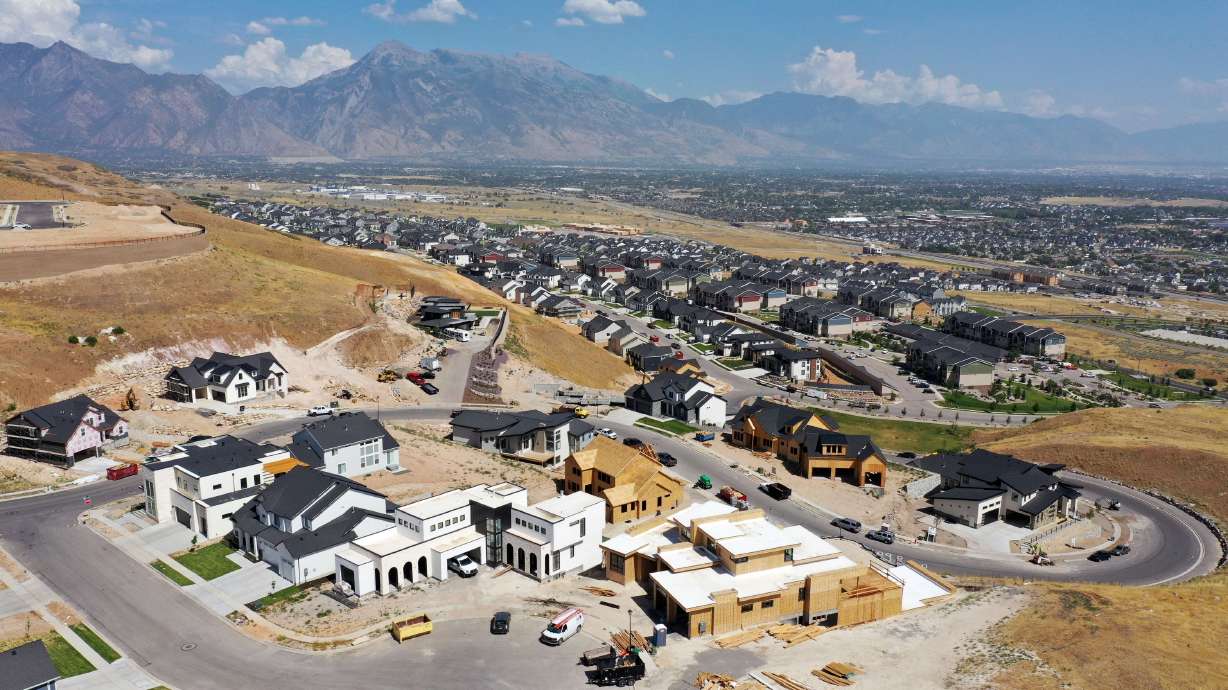Estimated read time: 3-4 minutes
This archived news story is available only for your personal, non-commercial use. Information in the story may be outdated or superseded by additional information. Reading or replaying the story in its archived form does not constitute a republication of the story.
SALT LAKE CITY — As the U.S. standard 30-year fixed mortgage rate has blown past 6% and now flirts with 7%, it's chipping more and more away at what a would-be homebuyer might actually be able to afford.
Consider this:
Say your budget was $2,500 a month. At today's rates, you can now probably afford a house that costs about $476,000. Rewind to early 2021, when pandemic-era rates fell to record lows below 3%, and for that same $2,500 a month you could have purchased a home with a price tag of over $758,000.
That's according to a calculator put together by Michael McDonough, Bloomberg's chief economist for financial products.
It depicts the shock from just how fast mortgage rates have risen amid the Federal Reserve's fight with record inflation — and how much that shock is impacting homebuyer affordability. No wonder demand is down, reflected in plummeting sales and, in some areas, tempering home prices.
David Doyle, Mcquarie's head of economics, called the impact of those rising rates "the most severe deterioration in affordability on record," with the average monthly payment of a typical mortgage jumping by about $1,000 over the last year, Bloomberg reported.
Redfin, in a report published Wednesday, declared homebuyers today are "grappling with the most volatile mortgage rates" in more than 30 years.
As mortgage rates have fluctuated from almost 6% to below 5% to nearly 7% in just the last three months, it's been a wild ride for homebuyers.
"That's the most volatile three-month period since 1987, when mortgage rates swung wildly after surging to a record high of nearly 19% earlier in the decade while the Fed worked to quell severe inflation," Redfin noted.
Homebuyers in the market for a $500,000 home from July to September would have seen their monthly mortgage payment fluctuate by hundreds of dollars a month
The whiplash in mortgage rates between when homebuyers set their budget and when they make an offer is also making it extraordinarily difficult to plan ahead.
–Redfin deputy chief economist Taylor Marr
If they started looking in July, they would have expected their monthly payment to be $3,051, assuming a 20% down payment and the average 5.7% mortgage interest rate. If they found their home about a month later, in August, they would have seen their mortgage payment drop to $2,874, with a 4.99% rate. However, if they locked in in late September, with a 6.29% rate, that would have brought their monthly payment to $3,202, according to Redfin.
"The challenges homebuyers face in today's market go beyond the dwindling affordability caused by high mortgage rates and home prices," Redfin deputy chief economist Taylor Marr said in a statement. "The whiplash in mortgage rates between when homebuyers set their budget and when they make an offer is also making it extraordinarily difficult to plan ahead."
It's worth noting that 30-year mortgage rates, even near 7%, are still below their historical average of nearly 8% since 1971, according to The Mortgage Reports.
Rates hit a record high in 1981, when the annual average was 16.63%, according to Freddie Mac data.
However, what makes today's housing market so challenging for aspiring homebuyers is the record-high home prices, combined with the rapid fluctuation of rates in such a short period of time.
For example, in 1981, the median price of a single-family home in the U.S. was $68,000, according to the U.S. Department of Housing and Urban development.
Fast forward to today. The median price of homes sold in the U.S. as of the second quarter of 2022 was $440,300, according to Federal Reserve Bank of St. Louis economic research.









